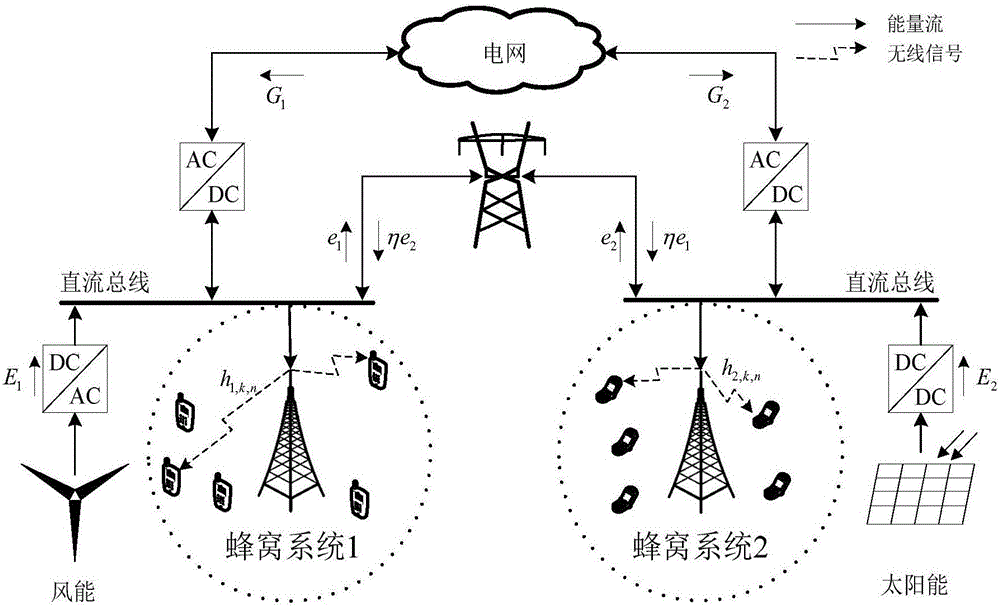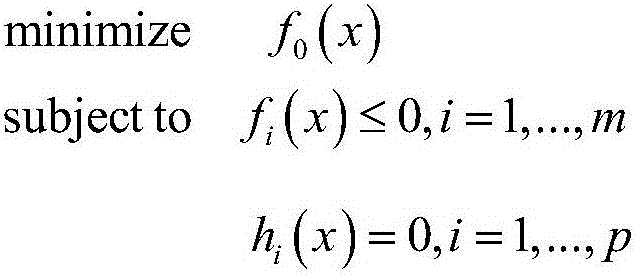Resource allocation and energy management method of collaborative cellular network
A cellular network, energy management technology, applied in the direction of energy reduction, advanced technology, climate sustainability, etc., can solve problems such as power distribution and energy management that are not designed
- Summary
- Abstract
- Description
- Claims
- Application Information
AI Technical Summary
Problems solved by technology
Method used
Image
Examples
Embodiment 1
[0123] Such as figure 1 shown.
[0124] A method for resource allocation and energy management of a cooperative cellular network, implemented by the following system: the system includes two cellular networks, each cellular network includes a base station and K i users, where i is the base station number, K i Indicates that there are K in base station i i user, user gather and respectively represent the sets of users in the two base stations; the two base stations share the same spectrum, and divide the entire licensed frequency band into N subcarriers with the same bandwidth, and the bandwidth of each subcarrier is B; let x i,k,n Assignment factors for subcarriers, where n represents the nth subcarrier, set of subcarriers When subcarrier n is assigned to the kth user in base station i, x i,k,n = 1; otherwise, x i,k,n = 0, and each subcarrier can only be assigned to one user; the channel gain of the kth user in base station i on the nth subcarrier is expressed ...
Embodiment 2
[0215] The method for resource allocation and energy management of a cooperative cellular network as described in Embodiment 1 is different in that the user is a single-antenna user; and the subcarrier is an orthogonal narrowband subcarrier.
Embodiment 3
[0217] As in the resource allocation and energy management method of the cooperative cellular network described in Embodiment 1, the difference is that the method of dividing the entire authorized frequency band into N subcarriers with the same bandwidth is to adopt the orthogonal frequency division multiplexing modulation technology The entire authorized frequency band is equally divided into N subcarriers with the same bandwidth.
PUM
 Login to View More
Login to View More Abstract
Description
Claims
Application Information
 Login to View More
Login to View More - R&D
- Intellectual Property
- Life Sciences
- Materials
- Tech Scout
- Unparalleled Data Quality
- Higher Quality Content
- 60% Fewer Hallucinations
Browse by: Latest US Patents, China's latest patents, Technical Efficacy Thesaurus, Application Domain, Technology Topic, Popular Technical Reports.
© 2025 PatSnap. All rights reserved.Legal|Privacy policy|Modern Slavery Act Transparency Statement|Sitemap|About US| Contact US: help@patsnap.com



